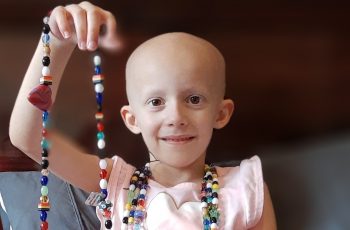Rhabdomyosarcoma
What is rhabdomyosarcoma?
Rhabdomyosarcoma is a type of sarcoma, which is a cancer of the soft tissue, connective tissue, or bone. Rhabdomyosarcoma usually begins in the cells that grow into skeletal muscles that control a person’s voluntary movements.
The most common places rhabdomyosarcoma occurs are in the head and neck, urinary and reproductive organs, arms and legs, and abdomen.
There are two main types of rhabdomyosarcoma:
- Embryonal: the most common type that occurs in children and often affects the head and neck, bladder, and reproductive organs.
- Alveolar: more common in older children and teenagers. It tends to grow quickly and spread to other areas of the body. This type often affects the muscles of the arms and legs.
Soft tissue sarcomas make up 7-8% of all childhood cancers.
Rhabdomyosarcoma is the most common type of soft tissue sarcoma in children.
What causes rhabdomyosarcoma? Who is affected?
The exact cause of rhabdomyosarcoma is unknown.
Some genetic health conditions passed down through families that increase a child’s risk of rhabdomyosarcoma include Li-Fraumeni syndrome, Neurofibromatosis, Beckwith-Wiedemann syndrome, and Costello syndrome.
This type of cancer is most common in children under age 10.
Males are more likely to develop rhabdomyosarcoma.
What are the symptoms of a rhabdomyosarcoma?
Symptoms depend on the size and location of the tumor. The main symptom of a rhabdomyosarcoma is a lump or swelling that may be painful. Symptoms of advanced rhabdomyosarcoma includes bone pain, constant cough, weight loss, and weakness.
How is rhabdomyosarcoma treated?
Surgery is used to treat and biopsy a tumor to determine a diagnosis and treatment plan. After surgery, patients are treated with chemotherapy to kill remaining cancer cells. For some patients, more surgery or radiation therapy may be necessary.




